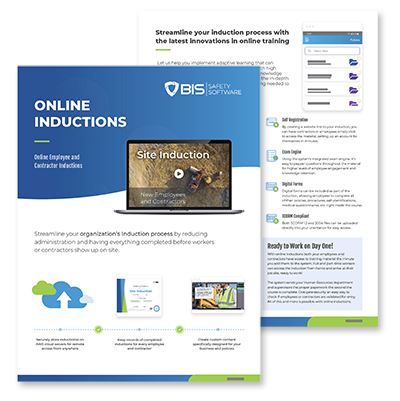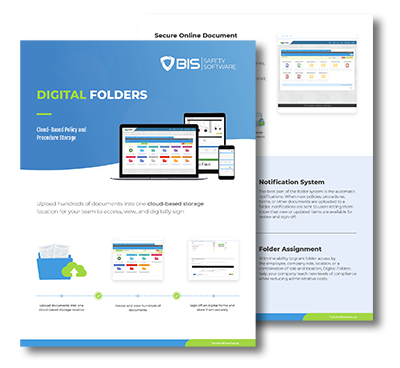A Learning Management System (LMS) is a powerful tool that manages all aspects of the learning process. Just like Microsoft Word helps us write documents, and Outlook helps us manage emails, an LMS is a software program that helps operators create, manage, and deliver eLearning courses.
Over the past 20 years, software for managing complex databases has been combined with digital education frameworks. This technological partnership creates a tool that delivers and manages instructional content, identifies and assesses individual training goals, tracks the progress towards meeting those goals, and collects and presents data for individual learners and the organization as a whole.
The most common form of LMS consists of two separate parts:
- A server component that performs the core functionality (creating, managing, and delivering courses, authenticating users, and serving data and notifications).
- A user interface that runs inside a web browser (like Firefox or Chrome), used by administrators, instructors, and students.
Jump to:
- What Does an LMS Do?
- Who Uses an LMS?
- Creating Coursework
- Organising Courses
- Delivering Courses
- Managing Users
- Monitoring and Assessing Learner Progress
- Common Features of a Corporate LMS
- Advanced LMS Features
- Conclusion
What Does an LMS Do?
A Learning Management System allows any organization to develop electronic coursework, deliver it with unprecedented reach and flexibility, and manage its continued use over time.
An LMS allows users to:
- Create eLearning content (lessons)
- Organize the content into courses
- Deliver the content (either internally to employees or to a wider internet audience)
- Enroll learners in courses
- Monitor and assess learners (e.g. attendance, grades)
An LMS may also have interactive features for learners such as threaded discussions, video conferencing, and discussion forums.
Who Uses an LMS?
Traditionally, the LMS was used in educational institutions to deliver coursework in schools. However, over the past two decades, more and more companies in the UK are using LMSs to deliver training internally to their employees, as well as externally to customers. According to the UK Learning and Work Institute, 81% of UK employers have increased their investment in workplace training and development since 2019, recognizing the importance of continuous learning and development in maintaining a competitive workforce.
The use of LMS in the workplace helps companies comply with mandatory training requirements, upskill their employees, and improve overall productivity. The Chartered Institute of Personnel and Development (CIPD) reports that organizations using LMS for training have seen a significant improvement in employee performance and engagement.

Creating Coursework
Course material can either be purchased from existing vendors on your LMS platform or developed from scratch by writing the lesson directly within the LMS or by importing existing material from Word documents, PowerPoint presentations, articles, or classroom training manuals. Advanced LMS platforms let developers add course material from various sources and in different formats, and even allow incorporating multimedia files such as videos, audio, and graphics into the lessons.
Another option available through some LMS providers is to have the course developed by professionals. While this may incur higher initial costs, the benefits to the company often outweigh the extra expense. Professionally developed eLearning programs tend to be of higher quality, with better production values and more interactive elements. Delivering a higher-quality product increases learner engagement and retention. There is also potential for reselling the program to other companies or learners.
Organising Courses
After creating the eLearning material, the next step is to organise it. This can range from offering a single course to structuring multiple courses in a specific sequence for certain learner groups.
An LMS should allow clients the freedom to structure their eLearning offerings in a way that best suits their business or organisation’s needs. A more developed LMS offers a set of organisational tools that can be combined in multiple ways, providing ultimate flexibility in how lessons are delivered, whether within a single small business or across multiple worksites.
Delivering Courses
How courses are delivered to learners depends on the needs and structure of the business or organisation. Some courses might be designed for a restricted audience (e.g. employee training within a company), while others may be intended for a wider population, either as free offerings or paid courses (such as an online school offering web programming courses).
A modern LMS should handle any specific application, allowing organisations to serve and manage both small and large numbers of learners, offer restricted or open enrolment, and easily integrate with payment processors for paid courses. LMS platforms should also cater to mobile devices, with responsive user interfaces, touch-friendly interaction, and offline accessible modes.
Managing Users
The ability to manage courses and users is what puts the “M” in LMS. There are three types of LMS users:
- Administrators
- Instructors
- Learners
The administrator is the person who sets up and configures the LMS for an organisation. Instructors are individuals preparing the lessons and monitoring learners’ progress. In smaller businesses or organisations, the administrator and instructor might be the same person.
Learners might be company employees, members of a government agency, private business staff, or students enrolled in courses offered by educational institutions to the general public. Managing users involves registering them in the LMS, assigning them to courses, interacting with them as instructors, determining what kind of content they are allowed to see, organising tests and conference sessions, grading them, and handling their payments.
A good LMS automates repetitive tasks, allowing LMS users to perform changes and updates to multiple items (e.g. learners or courses) all at once. According to a study by the UK Commission for Employment and Skills, companies that invest in effective training and user management systems see a significant boost in employee performance and satisfaction.

Monitoring and Assessing Learner Progress
One of the most important features an LMS offers, and a significant time-saver, is the ability to track and monitor learners’ progress in real time.
Whether dealing with 10 learners or 10,000, an LMS gives administrators fast, automated access to enrollment statistics, attendance records, learner grades, and many other performance metrics. According to the UK Digital Skills Partnership, the ability to monitor training progress has led to a 25% increase in course completion rates across various industries.
A comprehensive LMS should also include real-time alerts and notifications, such as informing instructors when a learner has submitted homework or when an e-conference session is about to begin.
Another essential feature for advanced LMS platforms is reporting. An LMS should have the ability to query and display data in graphs and charts, allowing administrators to easily spot trends or issues. The UK Office for National Statistics highlights that companies using data-driven training approaches see a 30% improvement in employee productivity.
Common Features of a Corporate LMS
There are close to 600 varieties of Learning Management Systems available for purchase today. Each is unique and has features designed to meet the needs of various trainers and educators.
In addition to the basic features described above, common components or features that can be found in many LMS platforms include:
- Automatic Enrollment: Logic within an LMS that registers and reminds employees about mandatory courses.
- Enhanced Security: Many corporate LMS solutions have single sign-on, advanced authentication, and firewalls to ensure data security.
- Rosters: A digital roll-call sheet for tracking attendance and for sending invitations to class participants.
- Distributed Instructor and Learner Base: Remote participation by the instructor or pupil allows courseware to feature multiple teachers or experts from across the globe.
- Course Calendars: Creation and publication of important dates related to the course schedules, including project deadlines and tests.
- Learner Engagement: Interaction between and among learners, such as instant messaging, email, and discussion forums.
- Assessment and Testing: Creation of knowledge retention exercises such as short quizzes and comprehensive exams.
- Grading and Scoring: Advanced tracking and charting of learner performance over time.
Advanced LMS Features
In addition to these basic features, there are many advanced features an LMS may include, such as:
- eCommerce: The ability to sell courses to third parties and integrate with payment processors such as PayPal and Stripe.
- eConferencing: The ability to organize and hold e-conference sessions, with multiple learners participating through audio and video.
- Excel Uploader: Using MS Excel, administrators can easily create multiple user accounts, upload hundreds of classroom and training records, and download training reports within minutes.
- Whiteboard: Online whiteboard functionality, so instructors and learners can create and share writings and drawings in real time.
- Mobile Friendly: The ability to use the LMS with mobile devices (smartphones and tablets), including being able to study offline.
- SCORM Compliant: The ability to integrate with third-party systems and exchange data through eLearning standards such as SCORM and Tin-Can.
- Custom Branding: Many LMS systems have the ability to use a company’s own branding and/or can create custom themes for the LMS user interface.
Conclusion
A Learning Management System is a technological tool used to deliver online education and training. An LMS gives clients a way to create and deliver content, organise courses, manage users, and monitor the progress of multiple users, all with relative ease. An LMS may also provide additional advanced features, including the ability to manage payments, custom branding, or eConferencing. Learning Management Systems are the future of training and are becoming increasingly essential in the UK workplace training landscape.























